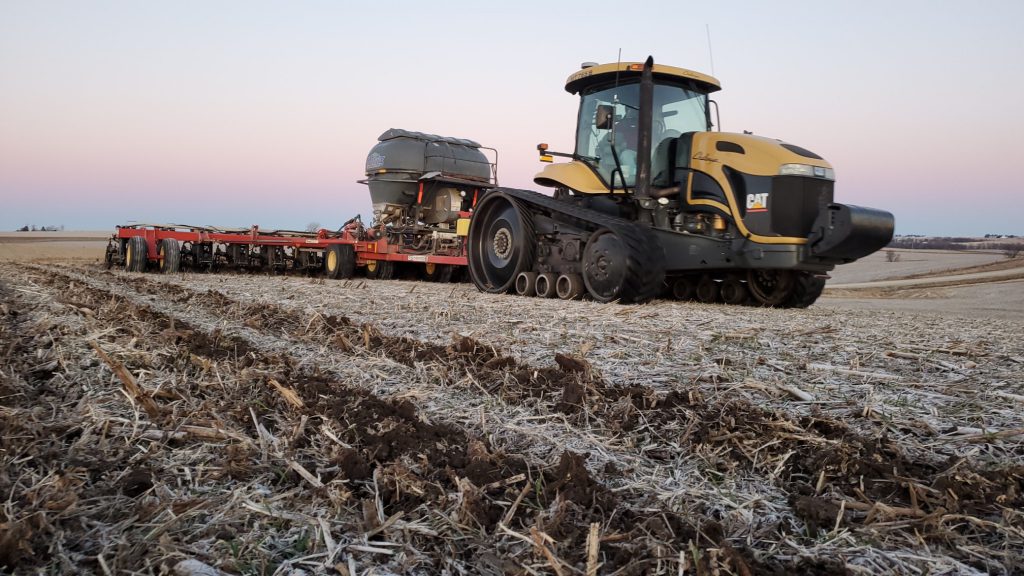 As temperatures rose in mid-March, Tama County farmer Adam Nechanicky saw signs of spring. Greening cover crops are encouraging after limited growth in the fall. After six years of experimenting, he’s seeing soil health benefits accumulate and now he’s comfortable planting corn and soybeans into green cover crops.
As temperatures rose in mid-March, Tama County farmer Adam Nechanicky saw signs of spring. Greening cover crops are encouraging after limited growth in the fall. After six years of experimenting, he’s seeing soil health benefits accumulate and now he’s comfortable planting corn and soybeans into green cover crops.
“Terminating the cover crop as I plant in the spring saves time and money. Last year, cover crops suppressed weeds and eliminated a post-emergence herbicide pass,” said Nechanicky. “I was in the field trying to find a weed and there was nothing to spray.”
About a decade ago, Nechanicky switched to a no-till system for soybeans and makes strips in the fall for the corn seed and nutrients. Six years ago he began experimenting with cover crops and notices soil health and economic benefits accumulating.
“I switched tillage programs to control erosion. Some of my land is along a creek bed and I hated watching the soil wash away,” he said. “Since adding cover crops, I’ve seen dramatic improvements in soil structure. Now the soil holds more water and I’m able to get into the field sooner to plant.”
Based on last fall’s soil tests, half of the prescribed P and K will be applied at planting with the strip-till bar. “I’ve been able to reduce the amount of fertilizer that’s applied almost in half because cover crops sequester the nutrients,” he said. “That is a huge economic benefit.”

Nechanicky also started varying row width in some fields to accommodate for earlier seeding of cover crops for grazing. “I plant two rows of a shorter season hybrid 30 inches apart with a 60-inch gap. Every third row is shut off,” he explained. “When corn is about V4 in development, I seed an eight-way cover crop mix. When the corn is harvested, I turn the cows out to graze.”
While having dual crops growing at the same time is a novel concept in his area, he gets more questions about cover crop termination. “Farmers getting started with cover crops are most concerned about termination. If they burn it off and try to plant too soon, it can be stringy and cause problems with the planter. Ask a farmer in your area that has success with cover crops for advice and attend field days. This will help you become more comfortable with the practice,” he said.
Adopting the mindset that cover crops provide benefits has helped him succeed. “It’s important to adapt to the practice, not just adopt it,” he said. “Understanding how the soil performs and the basic principles of cover crops helped me get where I am today.”
Nechanicky hopes to continue reducing herbicide use and is researching the best way to roll the cover crop instead of spraying it at planting. “That’s my goal. I want to roll the cover crop as I plant and look behind me and see a protective layer of mulch,” he said.
Click here to ask Adam a question about his farming operation.
